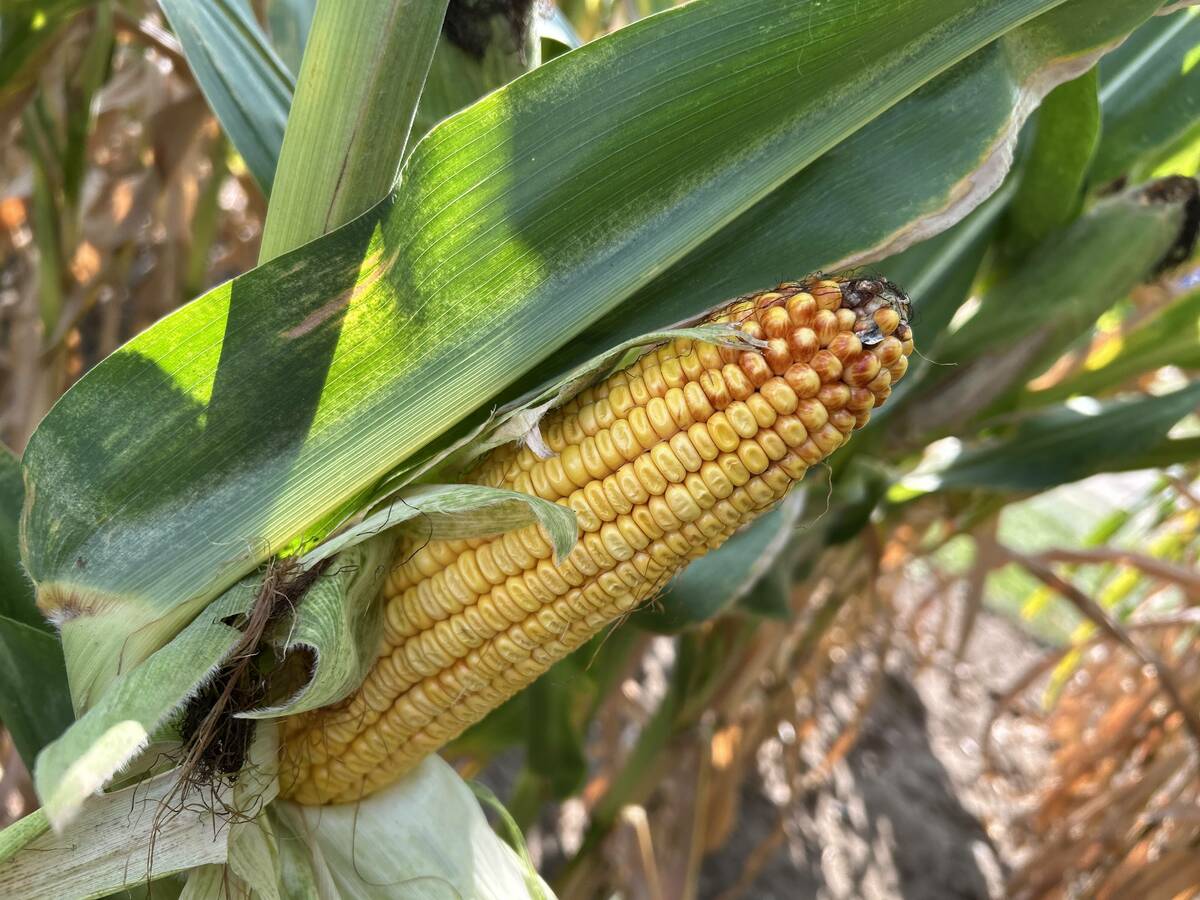DEBOLT, Alta. – Creating a 19th century pioneer wagon ride isn’t any easier with modern conveniences, organizers of a recent wagon trek discovered.
“It’s harder than ranching,” said Les Funk, of Debolt.
With the help of friends, neighbors, relatives and volunteers, each day Funk and his crew led 250 people, 120 riding horses, 45 wagons and one stage coach along a 56-kilometre ride beside the Smoky River in an attempt to give participants a taste of pioneer life.
“Anyone not here this time missed her because there ain’t going to be another one,” said Funk at the end of a long day.
Read Also

Crop estimates show mixed results
Model-based estimates used by Statistics Canada showed the 2025/26 crop year has seen increases in canola, corn for grain, oats and lentils production while seeing dips in spring wheat, durum wheat, soybeans and barley in comparison to 2024/25.
It took more than three years to organize the four-day trek in conjunction with the International Bison Conference in Edmonton.
Organizers spent weeks worrying about potential accidents, rain, unhappy campers and a possible low turnout, said Funk, who tried not to dwell on the possible problems during the planning stages.
“I’m more devil-may- care. Sure, you can dream up any number of things that can happen and I did my share of worrying.”
Despite some accidents, he said, the wagon trek was a success.
“I had umpteen people tell me it was beyond what they imagined,” said Funk, on his way to the hospital to see his daughter, Kacey, who broke her leg during the ride.
“I’m happy it’s gone as well as it has. Nobody has been majorly hurt.”
Alex McDonald of Grande Prairie, Alta., who was in charge of camp logistics, spent almost a day before the ride chopping tamarack posts into 1,600 tent pegs for the 34 canvas tents set
up each night.
He also ordered 200 poles for the tents, built a cookhouse wall and two wooden water troughs.
“I dumped one this morning and I found seven pennies in there.”
Each day the rope for the two 200-foot picket lines where the horses were tethered had to be moved and strung through predrilled posts already put into the ground.
The portable bathrooms, cookhouse and tents, and 9,000 gallons of water also had to be hauled to camp before the riders arrived.
Each morning, participants took down their tents, but it was up to McDonald’s crew to pack the tents, luggage and cook tent to the next camp spot and set it up.
“It’s kind of amazing,” he said.
“We could have beat O’Hare Airport. I’ve never seen anything unloaded that fast and we got no lost luggage.”
He also learned that 70-pound canvas tents turn into 110-lb. tents after a rain.
“There was two people dragging these tents and I said, ‘Hey guys, they’re not that heavy.’ I went to pick them up and I fell down,” said McDonald, who left his hired man to combine his fescue crop while he worked on the trek.
“I don’t know if there will be another one like this up here, so I volunteered. Somewhere else in the world there may be another and maybe I’ll go on it.”














